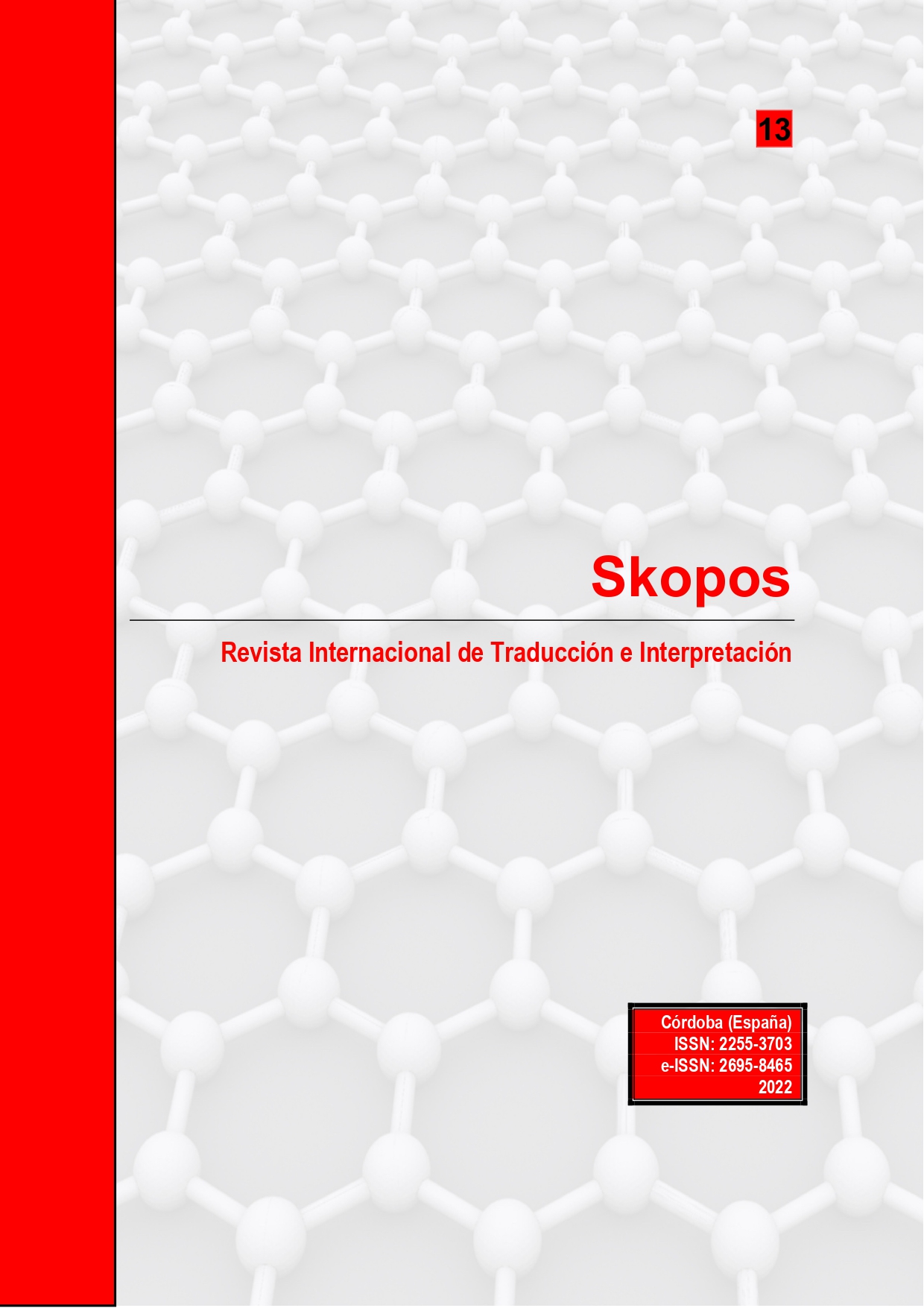Spanish Spanish
DOI:
https://doi.org/10.21071/skopos.v13i.15651Abstract
Over the last decades, the number of regulations and statutory provisions related to the medical area has experienced a fairly significant increase. As a consequence, the administrative authorities have been forced to create more actual text genres that support and consolidate these new proceedings. They are documents that, due to their nature, belong to both legal and medical fields and that are named «medical-legal texts». These texts present certain formal and communicative features that differ on the basis of the linguistic and cultural contexts and that, hence, have an impact on the translation process. They are known as «text conventions». In this publication, we will bring the spotlight into minors to analyze one of the most unknown medical-legal genres in translation: the Suspected Child Abuse Report. We will study the different text conventions composing it in the linguistic combination German-English-Spanish, with the aim of identifying and resolving possible translation problems.
Downloads
Published
How to Cite
Issue
Section
License
Política propuesta para revistas que ofrecen acceso abierto. Aquellos autores/as que tengan publicaciones con esta revista, aceptan los términos siguientes:
- Los autores/as conservarán sus derechos de autor y garantizarán a la revista el derecho de primera publicación de su obra, el cuál estará simultáneamente sujeto a la Licencia de reconocimiento de Creative Commons que permite a terceros compartir la obra siempre que se indique su autor y su primera publicación esta revista.
- Los autores/as podrán adoptar otros acuerdos de licencia no exclusiva de distribución de la versión de la obra publicada (p. ej.: depositarla en un archivo telemático institucional o publicarla en un volumen monográfico) siempre que se indique la publicación inicial en esta revista.
- Se permite y recomienda a los autores/as difundir su obra a través de Internet (p. ej.: en archivos telemáticos institucionales o en su página web) antes y durante el proceso de envío, lo cual puede producir intercambios interesantes y aumentar las citas de la obra publicada. (Véase El efecto del acceso abierto).






